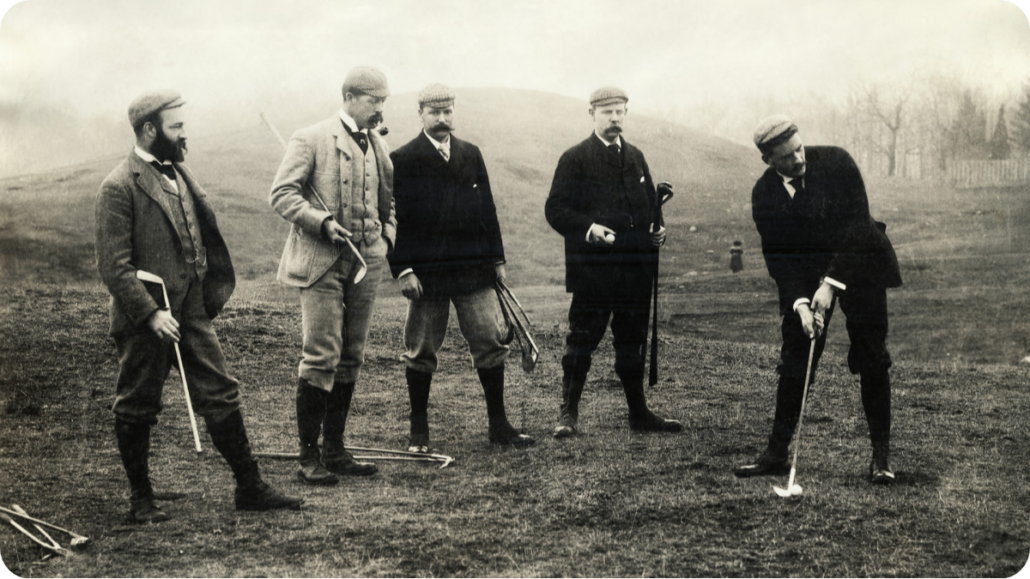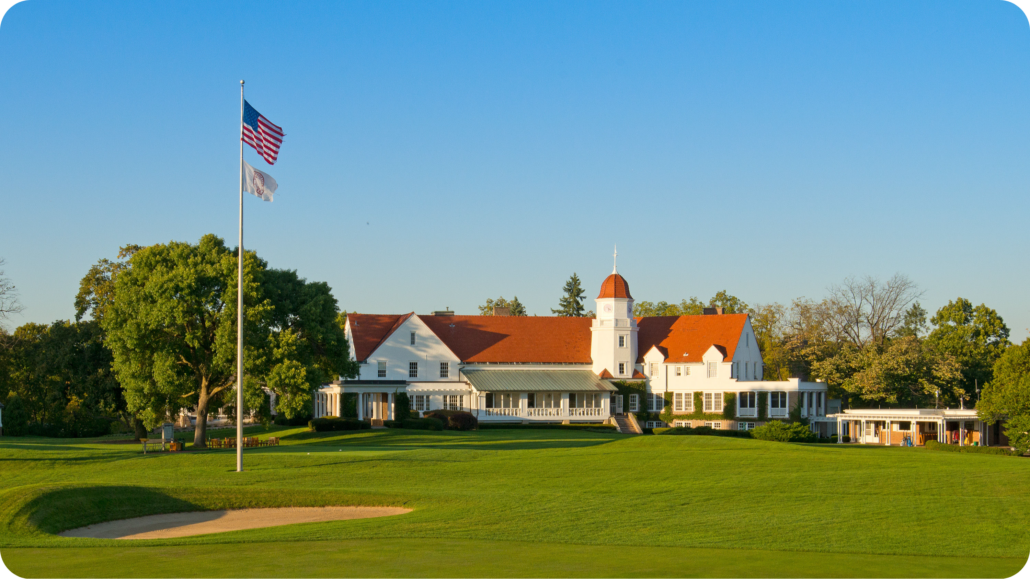From Fairways to Firmware: A Brief History of Golf and the Evolution Of The Modern-day Golf Cart GPS
Long before smart tracking sensors, golf cart GPS systems, and billion-dollar professional tours, golf as we know it found its humble beginnings in an array of pastimes spread over numerous locations. The history of golf can be just as mesmerizing, foiling, and rewarding as the game itself. And while the true origins of golf remain a fiercely debated topic, there is no denying the game’s popularity and its ongoing spread and growth worldwide.
Depending on who you ask, the first games that hint at anything representing what we know as golf today could either be the Roman game of Paganica, the Ming dynasty’s game of Chuiwan, the English game that was Cambuca, the French game, Chambot, or any of the other early ball-and-stick games from Ireland, Scotland, and Persia and more. And while these foregone pastimes share similarities with the game, it’s in the links of Scotland where golf began to evolve into the game we know and love today. In this article, we take a look at the history of golf as we know it, how it made its way to the United States of America, as well as how equipment and technology changed and impacted the way the sport is played.
Golf Cart GPS: The Origins And Early History Of Golf As We Know It

The most commonly held belief is that Scotland is considered to be the true home of golf. This can be attributed to the fact that the first clubs, the first 18-hole courses, the first equipment, as well as, most importantly, the first set of rules were all established in the country. It, however, was not without its share of struggles, nor a ban or two.
The earliest known mention of golf can be traced back to 1457, when King James II’s Act of Parliament prohibited playing golf along with football. This was due to the King’s belief that the game’s popularity was a distraction from military training – those who were eligible for service, far rather chose to practice their swings than their archery. Little regard was given to the ban as it was implemented again in 1471, and again in 1491. The latter was by King James IV, who ironically became the world’s first golfing monarch after approving the game’s play in 1502.
Throughout the 16th century, golf rapidly spread to other parts of Europe, largely thanks to this royal advocacy. King Charles I was responsible for taking the game to England, while Mary Queen of Scots introduced it to the French when she went to study in France. It is believed that this is where the term “caddie” originated, as it was a shortened form of “cadets” who served as aides for the royals. It was also during this century that the first ever International match was held in 1682, when George Patterson, representing Scotland, got the better of two noblemen from England.

The Honorable Company of Edinburgh Golfers’ “Articles and Laws in Playing at Golf” is the first record we have of a set of rules being implemented for the game and dates back to 1744 at the Muirfield Club, which gave the club its popularity and makes it the longest-standing golf club in the history of the sport. It is the same, or at least similar, set of rules that the Society of St. Andrews Golfers, later known as The Royal and Ancient Golf Club of St Andrews, adopted to become the most influential governing body of golf in the world, and who still governs the game globally and its rules to this day.
It was at St. Andrews where the first ever 18-hole course was constructed. And while golf may have been played there since the early 15th century, it was only in 1764 that the 22-hole course became 18 holes, essentially establishing the now-recognized standard for the game almost everywhere. It was between 1863 and 1865 that Old Tom Morris redesigned the layout to include wider fairways, splitting several shared greens as well as placing hazards strategically rather than having them occur naturally. It is for these reasons and Old Tom Morris himself that St. Andrews is considered “The Home of Golf”.
Golf Cart GPS: Golf Making Its Way To America
As Scottish soldiers, immigrants, and expats made their way across the world during the 18th and 19th centuries, so, too, did the game of golf. The first evidence of golf being present in the USA was a shipment from Scotland that consisted of 432 golf balls and 96 clubs in 1743. And while the record doesn’t show what the shipment was for, it can be assumed that at least a small number of Americans were already invested in the game by then.
Much like their roots in Scotland, the first golf courses in America were formed among cattle pastures and village greens. The earliest recognized clubs were a club in Charleston, South Carolina, that was founded in 1786, as well as the Savannah Golf Club, formed in 1794. The first 18-hole course established in America was the Chicago Golf Club in Wheaton, Illinois, in 1892.

Along with four other clubs established around the time, the Chicago Golf Club formed the United States Golf Association, otherwise known as the USGA. This came about when the St. Andrew’s Golf Club and the Newport, Rhode Island Golfing Club both held an independent golfing tournament in which each club declared the respective winner the “National Amateur American Golf Champion”.
It was evident that an organization was required to arrange, declare, and be in charge of official events and thus became the governing body of golf in America, particularly the US Amateur and the US Open. The five clubs that initially made up the USGA include:
● Chicago Golf Club in Wheaton, Illinois
● The Country Club in Brookline, Massachusetts
● Newport Country Club in Newport, Rhode Island
● Shinnecock Hills Golf Club in Southampton, New York, on Long Island
● Saint Andrew’s Golf Club in Hastings-on-Hudson, New York
Golf Cart GPS: The Growth Of Golf In The United States

During the early 20th century, golf in the United States saw a significant rise in growth, both in the number of players as well as public interest on a professional level. This can be attributed to players like Francis Ouimet, dubbed “the father of amateur golf”, as well as Walter Hagen, a flashy, yet competitive player who racked up 11 major wins and is said to have boosted the status of professional golfers. It was also during this time that Bobby Jones stamped his mark as one of the most influential players ever in the sport, winning the Grand Slam in 1930 as an amateur.
Like most recreational activities, golf saw a decline during the Great Depression. Private clubs battled to stay afloat as memberships dropped, and course maintenance became a financial strain. Public courses made play somewhat accessible to a few, but ultimately, the game’s growth stagnated, if not declined, during this time. Golf faced further turmoil during World War II when countless men were serving, and many courses were closed or repurposed for military use or agricultural efforts.
Following the war and the rebound in the US economy, golf was one of the many pastimes that saw a substantial resurgence. The economic prosperity meant that golf courses were readily accessible to the middle class and not just a game meant for the wealthy, as it may have been before. Simultaneously, television and golf tournament coverage became a major contributor in bringing the game into millions of American homes, paving the way for the “golden era” in televised golf, from the fiercely contested tournaments between Jack Nicklaus, Arnold Palmer and Gary Player, to the complete domination and capitulation into mainstream success thanks to Tiger Woods.
Golf Cart GPS: The Evolution Of Golf Equipment And Technology

The history of golf cannot be discussed without a mention of the evolution of equipment and technology. Golf has come a long way from feather-stuffed balls and handmade wooden clubs. Towards the end of the 20th century, major strides were made where wooden clubs transitioned to steel and carbon fiber with cavity backs and forgiveness to boot, while balls went from rubber cores and synthetic resin to high-performance, multi-layer urethane shells.
As equipment evolved, technology closely followed suit. Once again, what started as analyzing swings on slow-motion video developed into an entire industry with tracking technology, data, and real-time feedback. Launch monitors provide all there is to know, and then some, about a shot and its result, while distance aids like smart watches and range finders make selecting the perfect club a breeze.
At-home simulators and smart putting greens have all aided practicing off-course in the comfort of your own home, virtually at any time, conveniently. At the same time, data analytics technology can be used by course managers to improve the player experience, monitor pace, and manage operations more efficiently. This intersection of where conventional and modern technology meet is now a defining feature of today’s game and its undertaking, and that’s where Tagmarshal comes in.
Golf Cart GPS Systems And Tagmarshal’s Impact
For the most part, golf carts have revolutionized how golf is played, especially so in America. And since their initial introduction during the 1950s, carts became a popular alternative to traditional walking of the course by the 1980s. In terms of their design and dimensions, golf carts have not changed, nor needed to, much.
As digital technology evolved, developers started including or fitting golf cart GPS units to the carts, initially to give players a better sense of the course layout and yardages. And while these features are handy for whoever is playing, it’s but the tip of the iceberg of what is actually possible with the technology we have available today.

Tagmarshal has been at the forefront in golf cart GPS technology, both in golf course optimization as well as pace-of-play management. Our system tracks advanced data measured by wearable and golf cart GPS trackers to provide real-time information to course operators. This includes player positioning, bottleneck detection, and speed of play tendencies. All of these critical tools improve flow and reduce delays on the course.
This comprehensive software provides management with the tools needed for data-driven decision-making, identifying opportunities for improvement, which in turn allows course managers to do more with fewer resources, ultimately saving time and costs. The benefits of this are insurmountable and include:
● Smoother rounds
● Better player experiences
● Satisfied players/members
● Improved tee time management
● Increased tee time availability
● Boosts in revenue
Golf has come a long way since its early beginnings. With the digital era we live in, Tagmarshal represents a new chapter in golf’s history where tradition meets innovation. Would you and your course not want to be part of it, too? Get in touch if you would like to revolutionize the way you manage your course today.
 WATCH DEMO
WATCH DEMO